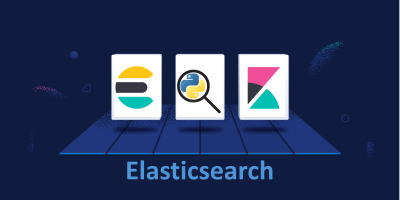Basic Python Django (หลักสูตรพื้นฐาน)
Django เป็นหนึ่งเฟรมเวิร์คที่ได้รับความนิยมในการนำไปพัฒนาเว็บไซต์ระดับโลกมากมาย อาทิ In...

ElasticSearch คือเครื่องมือค้นหาและวิเคราะห์ข้อมูลแบบกระจาย ที่มีพื้นฐานมาจาก Apache Lucene การรองรับภาษาต่างๆ ประสิทธิภาพที่สูง และเอกสาร JSON ที่ปราศจากสคีมาทำให้ Elasticsearch เป็นตัวเลือกที่เหมาะอย่างยิ่งสำหรับการวิเคราะห์บันทึกและกรณีใช้งานการค้นหาต่างๆ
Kibana คือเครื่องมือแสดงข้อมูลด้วยภาพและสำรวจข้อมูลที่ใช้สำหรับการวิเคราะห์บันทึกและอนุกรมเวลา การตรวจสอบแอปพลิเคชัน และการใช้งานความอัจฉริยะในการดำเนินการ ซึ่งมีคุณสมบัติประสิทธิภาพสูงแต่ใช้งานง่ายมากมาย เช่น ฮิสโตแกรม กราฟเส้น แผนภูมิวงกลม แผนภูมิความร้อน และการสนับสนุนภูมิสารสนเทศในตัว นอกจากนั้นยังมีการผสานรวมที่เหนียวแน่นกับเครื่องมือวิเคราะห์และค้นหายอดนิยมอย่าง Elasticsearch อีกด้วย ซึ่งทำให้ Kibana กลายเป็นตัวเลือกแรกๆ ในการแสดงข้อมูลที่อยู่ใน Elasticsearch ด้วยภาพ
Module 1: Introduction to Elasticsearch with Python
Module 2: Getting started
Module 3: Managing Documents with Python
Module 4: Mapping & Analysis
Module 5: Searching for Data
Module 6: Joining Queries
Module 7: Controlling Query Results
Module 8: Aggregations
Module 9: Improving Search Results
Django เป็นหนึ่งเฟรมเวิร์คที่ได้รับความนิยมในการนำไปพัฒนาเว็บไซต์ระดับโลกมากมาย อาทิ In...
ด้วยความต้องการที่เพิ่มขึ้นสำหรับนักพัฒนาแบบ Full-Stack มีความจำเป็นที่จะต้องเรียนรู้กา...
Django framework เป็นหนึ่งในเฟรมเวิร์คที่พัฒนามาจากภาษา Python ได้รับความนิยมในการนำไปพ...
หลักสูตรนี้เหมาะสำหรับผู้ที่เขียน Python มาได้สักระยะแล้วหรือผ่านการอบรมตัว Introductio...
Microservices ช่วยให้เราสามารถพัฒนาซอฟต์แวร์เป็นชิ้นส่วนเล็กๆ ที่สามารถทำงานร่วมกันได้...
ElasticSearch คือเครื่องมือค้นหาและวิเคราะห์ข้อมูลแบบกระจาย ที่มีพื้นฐานมาจาก Apache Lu...